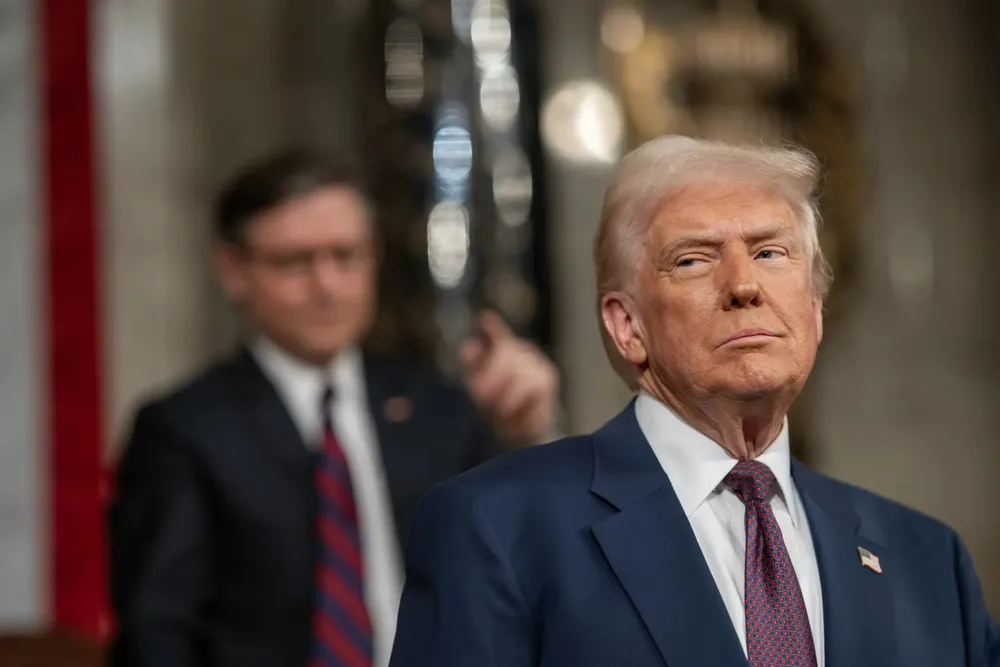Trump's latest offshore wind broadside targets Biden rules
Move is part of escalating drive by Interior secretary Doug Burgum to halt sector development, and measures could be applied retroactively

The US Department of the Interior (DoI) announced new measures targeting offshore wind development today, in the latest administrative broadside aimed at furthering President Donald Trump's goal of killing the industry.
DoI and its two coastal energy regulators, Bureau of Ocean Energy Management (BOEM) and Bureau of Safety Environmental Enforcement, announced it will launch “a full review of offshore wind energy regulations to ensure alignment with the Outer Continental Shelf Lands Act [OCSLA] and America’s energy priorities” under Trump.
OCSLA, passed in 1953 to assert US jurisdiction over its coastal waters, is the primary law governing offshore energy development.
DoI said it would home in on the Renewable Energy Modernisation Rule (REMR) “as well as financial assurance requirements and decommissioning cost estimates for offshore wind projects.”
The goal is “to ensure federal regulations do not provide preferential treatment to unreliable, foreign-controlled energy sources over dependable, American-made energy,” DoI said.
REMR went into effect 15 July last year to increase survey flexibility and improve the project design and installation verification process.
Renewables advocacy group American Clean Power Association (ACP) pushed backed against Interior's move.
Noting BOEM's multiyear process and extensive stakeholder engagement involved in creating the Modernisation Rule, ACP said: “Any revisions should follow a similarly transparent and deliberative process including direct engagement with affected industries and opportunity for public comment.
“Rolling back this rule would threaten good-paying American jobs, jeopardise energy deployment, undermine grid reliability, and ultimately raise energy costs for American consumers and businesses,” the group added.
Ongoing assault
The latest attack is part of Trump’s escalating war on wind power in general and offshore wind in particular.
Under Trump, the only projects that are likely to go forward are the five already in construction, totalling 5.9GW of capacity out of the 19GW approved under former President Joe Biden.
That order targeted BOEM’s previous standard for approving offshore wind arrays in line with OCSLA’s 12 requirements that allowed for balancing of criteria to enable development.
That is just one of the measures being delivered by DoI against wind and solar energy that “go well beyond any leveling of the playing field, instead significantly disadvantaging” these renewables, according to a brief released by law firm Troutman Pepper Locke.
Through this, DoI will conduct “a careful review of avian mortality rates” at wind projects to determine whether such impacts qualify as “incidental” under the Migratory Bird Treaty Act (MBTA), according to Troutman.
While data suggests that wind farms present manageable risks to birds, Troutman said DoI “seems to be telegraphing a legal strategy to use the MBTA to block wind energy” by “classifying avian mortality at wind farms as intentional take.”
Because MBTA is a criminal statute, “this could result in the criminalisation of the operation of wind farms,” Troutman added.
It remains unclear how many of DoI’s latest moves could be retroactively applied to permitted projects and awarded leases.
In accordance with Trump’s memorandum, DoI said it was conducting “a review of offshore wind energy projects and their impact on the environment, national security and the economy,” raising concerns these new rules would apply to existing arrays and leases.